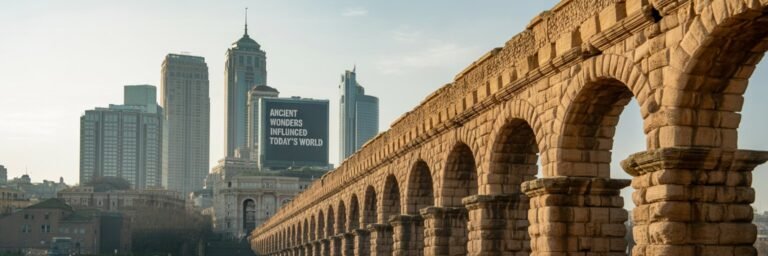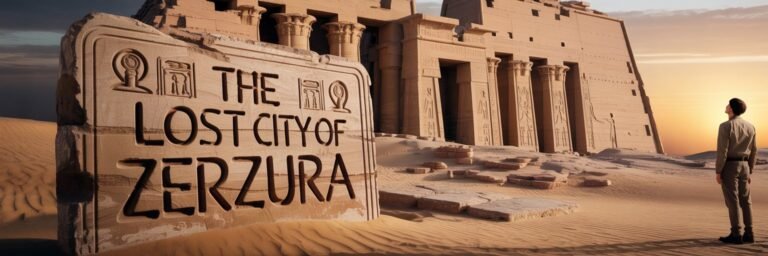INTRODUCTION
In the realm of history, there is often a narrative of cities as shape-shifting entities that fluctuate in response to the ever-changing tides of politics, culture, and economic fluctuations. However, they also assume a more lasting character, one that excels in providing humanity with scientific breakthroughs that leapfrog civilization into new eras. Some cities, through their unique confluence of factors such as scholars, resources, culture, and sometimes serendipity, became trailblazers of scientific discovery that forever changed the trajectory of human history.
HISTORICAL BACKGROUND
Ancient Alexandria, birthplace of the Hellenistic empire, flourished under Ptolemy I Soter’s reign in the fourth century BCE. Known for the majestic Lighthouse and the colossal Library, Alexandria was the crucible of landmark scientific advancements. The great Library, home to an estimated 400,000 scrolls, attracted intellectuals and scientists. Among them, Euclid, the father of Geometry, and Hero, innovator of the first steam engine.
Jumping forward a couple of centuries, Italy – Florence and Bologna, in particular – during the Renaissance, emerged as hubs of scientific leaps. The explanation for this might be cultural dynamism or patronage aristocracy, but the effects were tangible. Florence cradled Galileo Galilei whose work revolutionised humanity’s perception of its place within the cosmos. Meanwhile, in Bologna, the University stimulated the development of anatomy, housing pioneers like Mondino De’ Luzzi.
THEORIES AND INTERPRETATIONS
Different interpretations explain how historical cities birthed scientific breakthroughs. One widely acclaimed theory is Richard Florida’s “Creative Class” concept that asserts the creative human capital of a city as plenty of the reasons for scientific advancement. Florida stipulated that the intensity of innovative output is directly proportional to its intellectual capacity and cultural openness.
An alternative viewpoint is Thomas Kuhn’s groundbreaking conception of “paradigm shifts,” as outlined in his influential book The Structure of Scientific Revolutions (1962). The cities were stages for these paradigm shifts, where the norms of scientific understanding were questioned, turned on their heads, and replaced with new, transformative concepts. Whether it’s Alexandria’s Euclidean geometry replacing old notions of space or Galileo’s heliocentrism substituting the geocentric model, such shifts often took place within the confines of these creative cities.
MYSTERIES AND CONTROVERSIES
From mysterious losses of knowledge to contentious attributions of scientific breakthroughs, these historical cities have their share of enigmas and discord. The Library of Alexandria’s loss, for instance, is an enigma that perplexes historians today. It was, perhaps, the greatest intellectual loss that led to a stagnation period known as the Dark Ages.
Modern historical revisionism throws a controversial light on many breakthroughs. The binary controversy surrounding Isaac Newton and Gottfried Leibniz, who independently discovered calculus, is a reminder of how even historical cities cannot isolate their scientific advancements from the geopolitical occurrences of their times.
SYMBOLISM AND CULTURAL SIGNIFICANCE
Historical cities symbolize the confluence of culture, intellect, and innovation. They embody the spirit of enquiry and intellectual freedom that propels the great wheel of scientific evolution forward. Ancient Alexandria stands as a symbol for intellectual tolerance and a culturally pluralistic ethos that made it a melting pot of ideas.
Renaissance Florence carried the flag for the humanist movement, which stressed observation and empirical evidence – the bedrock of the scientific method. historical cities embody the social and cultural attitudes conducive to fostering scientific breakthroughs and encouraging the cross-pollination of ideas that lead to leaps of innovation.
MODERN INVESTIGATIONS
Modern research into these cities has opened new vistas to understand their scientific legacies. New archaeological excavations are continuously unearthing artefacts that throw new light on the scientific advancements of these cities. Similarly, historical epidemiology using modern genetics is revising our understanding of ancient diseases and healthcare.
Meanwhile, the digital age allows millions to explore cities and their scientific heritage through virtual exhibitions, digitized manuscripts, 3D reconstructions, and more. The voices of these cities, silenced for so long, are now being heard louder than ever before.
LEGACY AND CONCLUSION
The legacy of historical cities cannot be confined to museums or textbooks; rather it endures in the DNA of modern research and innovation. The scientific contributions of these cities ushered novel disciplines and challenged fundamental beliefs of the universe.
As we stand on the brink of new frontiers today, the archives of these historical cities serve as reminders that innovation is a dynamic process, eternally influenced by cultural, economic, and political currents. The story of these cities is the story of mankind’s unfaltering endeavour towards understanding the mysteries of nature. It asserts that cities, past, present, and future, are more than a collective of buildings and infrastructure; they pulsate as grounds for human intellect and innovation to flourish. Their legacy serves as a compass for navigating the uncharted territories of scientific exploration that lie ahead.
With profound humility and curiosity in our hearts, we sustain the spirit of these historical cities, standing on the shoulders of the giants who came before us, peering further into the grand expanse of the cosmos.






